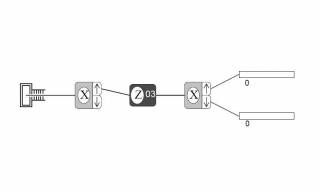Determining how a Magnetic Field Changes a Particle's State
Highlights of the activity
- For this activity, students are placed into small groups and asked to use the SPINS program to find how a magnet in the program affects the state of an incoming particle.
- Students will calculate the probability that the $\vert \psi \rangle$ made by the magnet will be measured in the $\vert \phi \rangle$ state, where $\phi$ can be any one of spin-up or spin-down states with x,y, or z-orientation.
Reasons to spend class time on the activity
Typically, once the activities start with the Stern-Gerlach experiment, students will often lose sight of how the Stern-Gerlach device actually separates spin-up or spin-down particles. This activity has students revisit the idea that an external magnetic field can result in a change of state in a particle. Students will also have practice calculating probabilities and using these probabilities to determine how a change in the strength of the magnet will change the state of an incoming particle.
